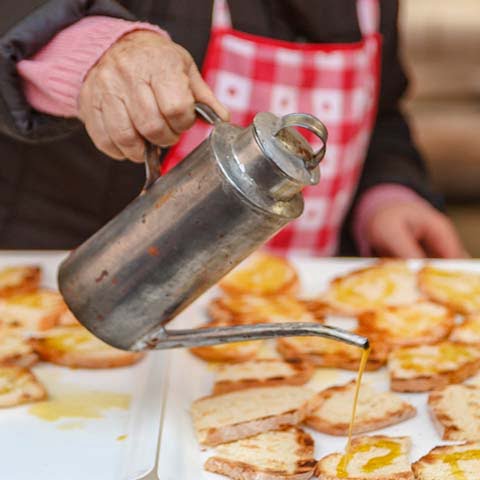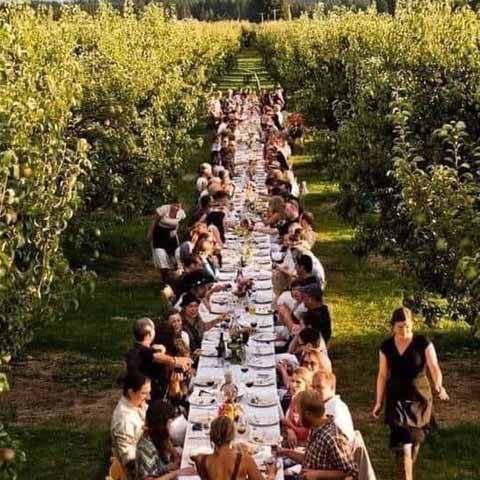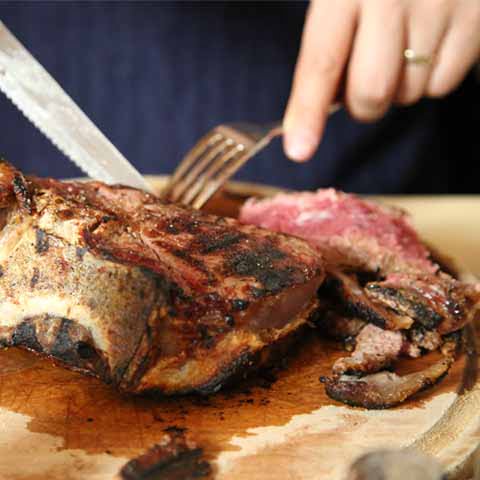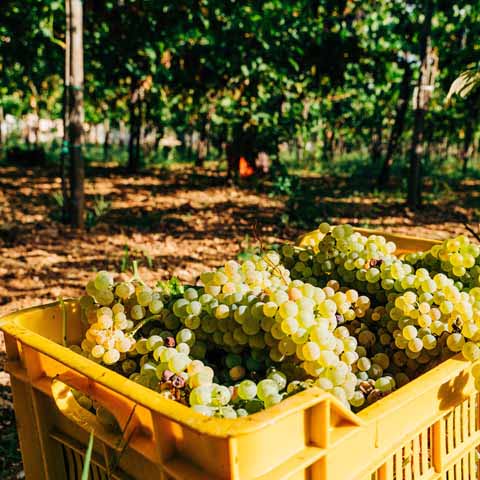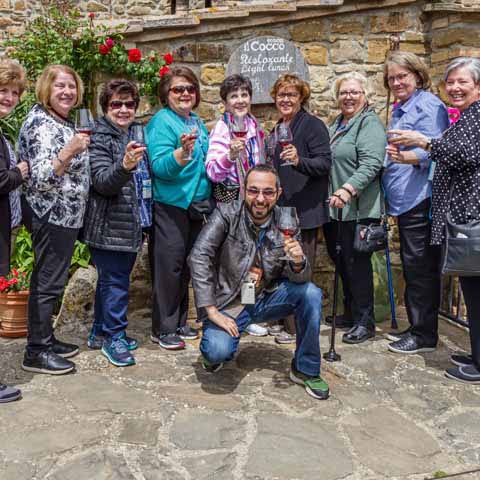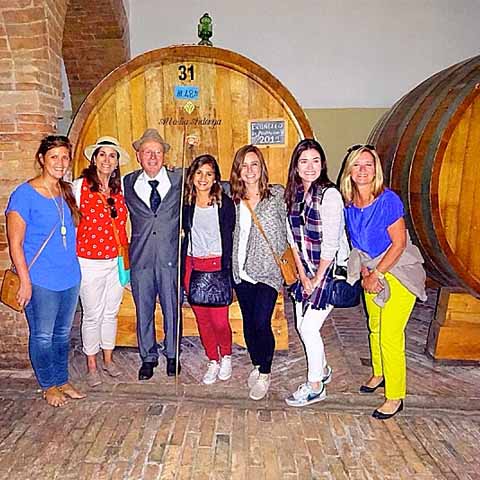Montalcino is a cultured and architectural glimpse into earlier times. You might devote days to roaming its avenues and back alleys, its rolling poppy covered hills, its olive groves, and vineyards all while tasting some of Tuscany’s best fare. Montalcino’s cuisine offers all that is wonderful about Tuscan food and then some. Classic ingredients see widespread use, for example, extra virgin olive oil, seasonal produce, and the dominance of Sangiovese grapes in the area’s red wines.
The reason for the success and excellent reputation of this modest Italian town is the Brunello wines, which are some of the most treasured red wines on earth. Montalcino was a humble settlement like many of its contemporaries in Tuscany until 1888 when Ferruccio Biondi Santi created the Brunello di Montalcino. Since then, the town has increased in acclaim and is now among the more popular Tuscan destinations for wine lovers.
The vineyards and olive orchards that blanket the town’s lower slopes provide some of the world’s most vibrant and delightful wines and olive oil. In addition to the wine, Montalcino’s cuisine consists of traditional Tuscan dishes such as zuppe (soup) including ribollita, a twice-cooked soup consisting of seasonal vegetables, and pappa al pomodoro. Tagliata di manzo is a favorite served rare and bloody. The steak is cooked and then served sliced, often with extra-virgin olive oil and sea salt.
When dining at family-owned restaurants and neighborhood cafés, you will experience the distinctive tradition that is the world-renowned Tuscan cooking heritage in Montalcino. As they say in Italy, “Buon appetito!”
APPETIZER
As with the rest of the Tuscany region, a good meal in Montalcino begins with a classic assortment of cured meats. Among these is lardo, cured strips of fatback, which is highly prized among the locals and considered to a staple of the appetizer round in Montalcino. The cured meats are typically accompanied by locally-produced cheeses.
Crostini are often present on the dinner table during the appetizer course as well. An essential part of Tuscan cuisine, crostini consist of small slices of toasted bread that are served with a variety of toppings, such as liver pâté.
FIRST COURSE
Straightforward, seasonal, local meal preparation is on the menu when it comes to mealtime in Montalcino.
Pici pasta, which is a long pasta shape that is thicker than spaghetti, is favored by the locals. The pasta is often paired with a sauce made from wild game such as hare or boar. Pasta is also often served with local porcini mushrooms.
In addition to pasta, there are several traditional soup first course dishes that are typical of Montalcino’s cuisine. Among these is pappa al pomodoro, which is made with tomatoes, broth, stale bread, garlic, extra virgin olive oil, and basil. Another is ribollita, which typically features stale bread and in-season vegetables. The specific ingredients of this soup can vary, but cabbage, beans, tomatoes, and potatoes are all common. The distinguishing characteristic is that it is boiled at least twice, in some cases several more times, and each reheating imparts new flavors.
A typical risotto dish in the area is risotto al Brunello di Montalcino, which has a deep red color due to the addition of the town’s local wine.
SECOND COURSE
Wild game such as boar or hare tends to feature prominently in local second course dishes. Beef is common as well with tagliata di manzo as a local favorite. The dish is made with a boneless beef steak that is cooked and then sliced before being served. In fact, the name of the dish derives from the Italian word that means “to cut.” Only high-quality beef is used to make tagliata.
SIDE DISHES
Second course dishes consisting of wild game are typically accompanied by creamy polenta. The flavors of other dishes may be enhanced by local ingredients, such as artichokes or truffles.
STREET FOOD
The concept of street food implies meals that can be enjoyed without the need for a table. Instead, food is eaten while seeing the sites, wandering the avenues or relaxing in a park. Nowadays, street food has grown into an art form, a product that is authentic and unique to each locale. Eating street food is among the best approaches to discovering local and classic cuisine that uses regional ingredients all presented in a warm and friendly environment. The bread in Montalcino is so delicious that it lends itself to top-shelf sandwiches, a staple of Tuscan street food. Just add area meats, cheese, and condiments, and you have a delicious panino to enjoy on the go.
DESSERT
Ah, desserts, perhaps our favorite part of any meal. It is common knowledge that dessert is an essential part of Italian cuisine. In Montalcino, the selection of sweet courses is rich and varied. Visitors should make it a point to try Panforte, the long-established chewy pastry that contains fruits and nuts. Caffè in forchetta, (coffee on a fork) sometimes known as caffè duro (solid or hard coffee), is a gourmet coffee pudding native to the Montalcino area that is made from an ancient recipe whose flavor transcends the average dessert and coffee.
WINE
Known for one of the most sought after and collectible wines in Italy, Montalcino is home to the Brunello. Brunello di Montalcino is among Tuscany’s premier and most lauded wines. This is a wine akin to no other: rich, sophisticated, and incredibly long-lived. Its unique perfume and taste make it a favorite of experts throughout the world. The key to its charm is the unique environment; the Brunello vineyards have the benefit of conditions warmer and drier than other locations, allowing the Sangiovese grapes to thrive. It is a lovely coincidence that one of the most exciting destinations in the world offers one of the most treasured wines. With these credentials, expectations for this wine run high, and we assure you, they are met with enthusiasm.
They say you never really know a place until you have lived there. However, you can certainly get more than acquainted with a place by experiencing its culture, and what better way to begin than with the lovely red nectar of the Sangiovese Grosso grape? A visitor can learn much about the area by touring the wineries and sampling the yield of a time-honored vine to bottle process.
No trip to Montalcino would be complete without sampling the local food and wine. Dishes such as papa al pomodoro, tagliata di manzo, and caffè in forchetta are among Tuscany’s finest, especially alongside the sublime Brunello di Montalcino.
Travel Guides
The Tuscany Region of Italy
The Cities of Tuscany, Italy
